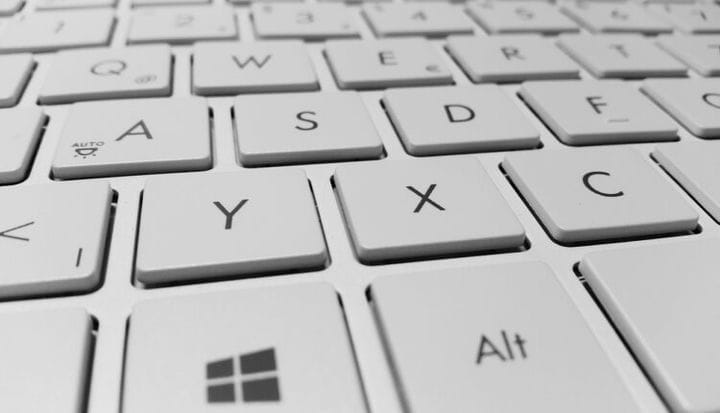Why the keyboard does not work – it has five reasons for this
Probably, each of us has come across a similar situation: you turn on the computer, try to enter text on the keyboard or switch from one window to another, but the keys do not respond to pressing, and the device itself does not show any signs of life. What caused this behavior of the device? Why does the keyboard not work on a computer or laptop? And how to fix it? Consider what could be the reasons.
Mechanical damage
The simplest explanation is mechanical damage to the keyboard. Perhaps you recently spilled coffee or sweet tea on it, accidentally dropped it, pulled the wire, etc., and then safely forgot about it. In this case, all that remains for you to do is to disassemble the device and try to fix it yourself, or contact a service center. The second option is preferable, especially when it comes to a laptop keyboard. If the keyboard cannot be brought back to life, you will have to purchase a new input device.
Contact violation
Sometimes keyboard problems are caused by the device not being properly connected to the computer. Check if the plug fits snugly into the socket on the system unit, if the fragile parts of the connector are bent. If necessary, carefully straighten them with tweezers and try connecting the keyboard again.
If you use a wireless keyboard, it’s worth checking to see if the battery is dead in it. Very often the problem disappears without a trace as soon as the power supply is replaced.
There is no corresponding driver
Why does the keyboard on the computer not work if the contact is not broken and the device itself is not damaged?
You can do this manually by visiting the website of your keyboard manufacturer.
Manual driver update
- go to the official website of the manufacturer;
- find the appropriate section, select your device model;
- download the archive and unpack it. Sometimes the driver has its own automatic installer, in which case you just need to click "Run file";
- if there is no automatic program, launch the "Device Manager";
- select "Update drivers", in the dialog that opens, select manual search, write the path to the folder into which you unpacked the archive;
- after installation, restart the computer.
There is another way to update drivers. It is often recommended on thematic forums when the participant does not know why the keyboard does not work on a Windows 7 computer or other OS. You won’t have to look for manufacturers’ websites, but you will need to install additional programs to update drivers. For example, Driver Genius Professional or Driver Checker. These utilities are paid, but if you wish, you can find a replacement for them among free software (DriverMax Free, etc.).
Viruses attacked
Sometimes input devices are blocked as a result of malware activity. If you don’t know why the keyboard on a laptop or computer doesn’t work, and with it the touchpad and mouse, then it’s most likely a virus infection of the system. What to do in this case?
Scan your system with an antivirus as soon as possible. If the antivirus did not detect a potential threat or simply turned off, use additional utilities. Dr.Web CureIt! is very effective in such situations. You can download this anti-virus utility from the official website of the Dr.Web laboratory. For the treatment of home computers, the program is free. The most important advantage of the utility is high reliability: the program will work even if the virus tries to turn off the computer during the scan and block it.
You can also advise the development of the Kaspersky studio, AVZ. Like Dr.Web CureIt!, the program is free. Updated regularly. It has several options for settings, which allows you to most effectively identify not only viruses and spyware, but also possible system vulnerabilities. Quickly eliminates "computer infection", gives many useful recommendations.
Keyboard just not enabled in BIOS
Finally, the last reason for the "lifelessness" of the device is the lack of a connection in the BIOS. This case is typical for netbooks and laptops, i.e. devices with built-in keyboards. How to fix the situation?
Very simple. Turn off the computer, then turn it on again. Before the operating system starts loading, we load the BIOS. Usually, you need to click the Delete button to do this, but there may be other options. Sometimes the BIOS is activated with the F2 or F8 keys (depending on the computer manufacturer). To help determine which button to press, a hint at the bottom of the screen (if there is one) can help.
Then we find a tab in the BIOS that lists all I / O devices. Select the item with the name "USB Controller", set the mode to "Enabled" ("Enabled"). Go to the “USB Keyboard Setup" item and repeat the operation, set the “Enabled” mode. Then we confirm saving the changes and exit the BIOS. Reboot and test the keyboard.
Sometimes the BIOS does not support USB keyboards. In this case, it is better to entrust the computer setup to professionals from the service center, since you need to reinstall the BIOS. Doing it yourself is quite difficult.
